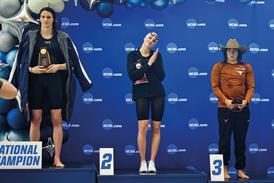The profession must be alert to the legal questions raised by the use of pilotless aircraft.
Few lawyers, I suspect, asked for a drone last Christmas (apparently it was on the top of the festive wishlist for men). However – and I ask this to in-house solicitors especially – did anyone higher up in your organisation ask for one? If you’re unsure, it’s worth checking.
From an aviation law perspective, a drone can be anything from a small toy aircraft up to a large unmanned aircraft used by the military and a number of companies.
Kate Staples, general counsel at the Civil Aviation Authority (CAA), which deals with aviation safety, says the operation of an unmanned aircraft triggers a number of legal questions.
If you are taking photographs or videos using a drone, for instance, you will need to be alert to privacy implications (the Information Commissioner’s Office deals with privacy matters). You will want to protect the personal information that is collected, ‘just as organisations are required as data controllers to protect other personal information they collect in other contexts’, suggests Covington & Burling associate Ezra Steinhardt, who works in the technology and media group at the firm’s London office.
Most organisations, whether in the public or private sector, will probably need CAA permission to operate a drone for ‘aerial work’. ‘We define “aerial work” as a situation where an “…aircraft is flown if valuable consideration is given or promised for the flight or the purpose of a flight”,’ says Staples.
The CAA, Staples says, is more than happy to advise organisations on whether they need permission. However, even with permission, users of drones still have to abide by certain distance-separation rules, as set out in the Air Navigation Order.
For example: ‘The person in charge of a small unmanned aircraft must maintain direct, unaided visual contact with the aircraft sufficient to monitor its flight path in relation to other aircraft, persons, vehicles, vessels and structures for the purpose of avoiding collisions.’
Drones aren’t just an issue for in-house lawyers, as Steinhardt points out. ‘We could see companies subject to cyber-attacks and a lot of industrial espionage scenarios,’ he says. ‘Law firms, as well as in-house lawyers, should be careful as this is a new form of “peaking through the windows”. If your offices are five or 10 floors up, you typically don’t think there’s someone looking through the windows. But with drones, it’s feasible.’
Internally, organisations should have internal systems in place to monitor the issues created by use of drones. Steinhardt advises in-house counsel to be involved in designing risk-management measures for use of drones from inception. (What better way for in-house lawyers to demonstrate their value by pre-empting legal issues rather than be the ones organisations turn to when things go wrong?)
In the meantime, the CAA recognises there are wider questions around using drones. ‘We are, therefore, working closely with the police and central government to ensure that proportionate regulations are in place to protect members of the public while allowing the free use of private and commercial unmanned aircraft,’ says Staples.
Not a week goes by, it seems, without drones hitting the headlines. It will be interesting to see how the legal issues concerning their use evolve.
Monidipa Fouzder is a Gazette reporter

















![David Lester (senior partner at Blythe Liggins), Darryl Barnes, Jagdeep Sandher (head of dispute resolution at Blythe Liggins)[4]](https://d1d8vslyhr7rdg.cloudfront.net/Pictures/274x183/4/2/8/116428_davidlesterseniorpartneratblytheligginsdarrylbarnesjagdeepsandherheadofdisputeresolutionatblytheliggins4_981603_crop.jpg)









1 Reader's comment